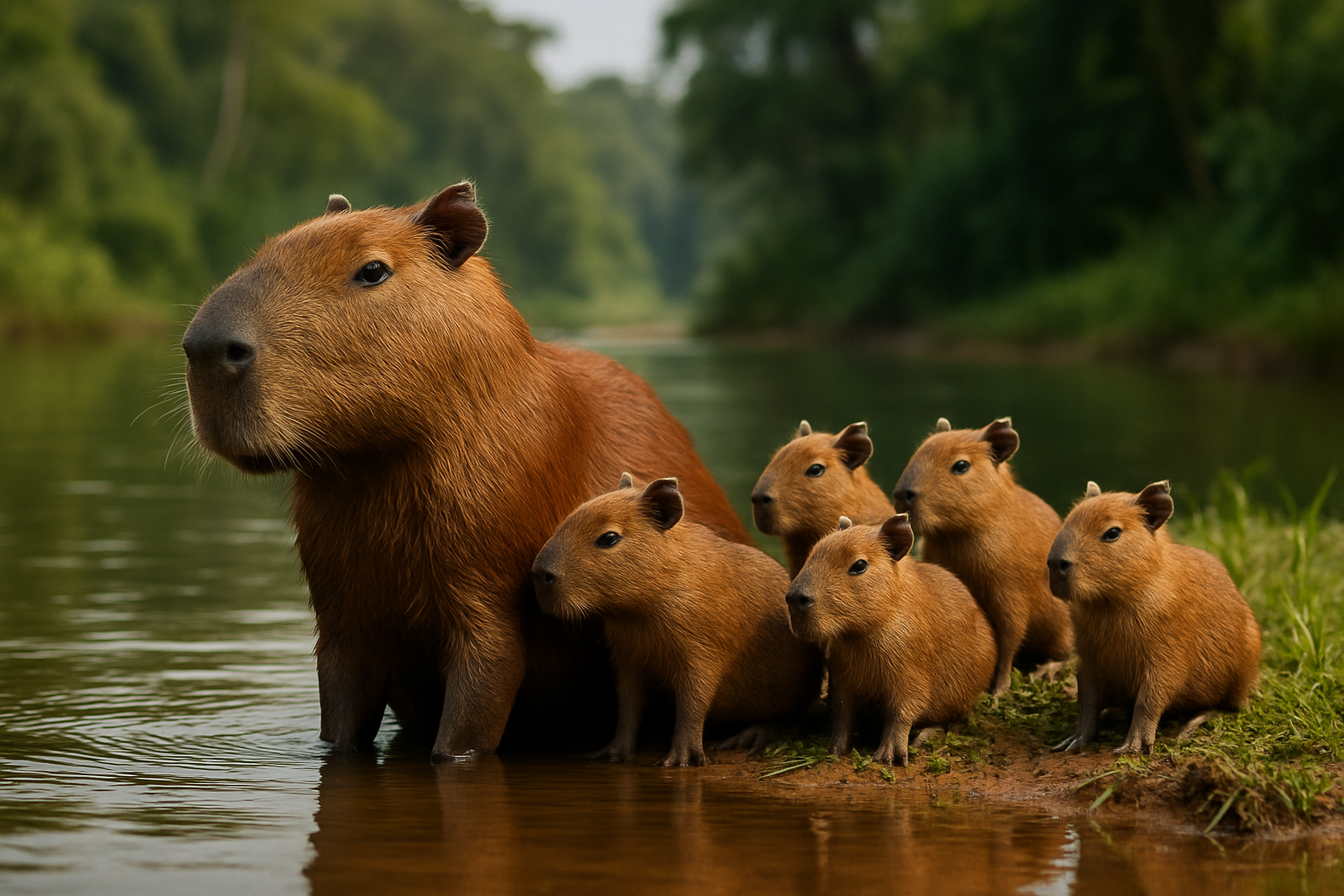The Remarkable World of Capybara Social Dynamics
Embark on a fascinating journey into the captivating social lives of capybaras, the world's largest rodents. These gentle giants, native to South America, have captured hearts worldwide with their unique behaviors and complex social structures. From their communal living habits to their surprising interspecies interactions, capybaras offer a wealth of insights into animal social dynamics. Join us as we delve into the intricate world of these charismatic creatures and uncover the secrets behind their harmonious societies.

Within these herds, capybaras engage in a variety of social behaviors that strengthen bonds and promote group harmony. One of the most notable behaviors is allogrooming, where individuals groom each other to reinforce social connections and maintain hygiene. This mutual grooming not only serves a practical purpose but also helps to reduce stress and tension within the group.
Communication: The Key to Capybara Harmony
Capybaras have developed a sophisticated system of communication to navigate their complex social lives. Vocalizations play a crucial role in their interactions, with capybaras using a wide range of sounds to convey different messages. These vocalizations include barks, whistles, purrs, and even underwater calls, each serving a specific purpose in their social repertoire.
In addition to vocal communication, capybaras rely heavily on body language and scent marking to convey information. They possess scent glands near their noses, which they use to mark territory and identify group members. This olfactory communication helps maintain group cohesion and establish hierarchies within the herd.
The Role of Hierarchy in Capybara Society
Like many social animals, capybaras have a well-defined hierarchical structure within their groups. The dominant male, often referred to as the alpha, plays a crucial role in leadership and protection. He is responsible for guarding the herd against predators and mediating conflicts between group members.
Female capybaras also have a hierarchical system, with older, more experienced females often taking on leadership roles within the group. These matriarchs play a vital role in decision-making, particularly when it comes to foraging and choosing safe resting areas for the herd.
Cooperative Child-Rearing: A Community Effort
One of the most fascinating aspects of capybara social dynamics is their cooperative approach to child-rearing. Female capybaras often synchronize their breeding cycles, giving birth around the same time. This synchronized breeding allows for communal care of young, with mothers sharing nursing duties and protecting each other’s offspring.
This cooperative breeding strategy offers numerous benefits, including increased survival rates for young capybaras and reduced stress on individual mothers. It’s not uncommon to see groups of baby capybaras, known as pups, being watched over by several adult females, showcasing the strong bonds and mutual support within the community.
Interspecies Interactions: Capybaras as Nature’s Diplomats
Perhaps one of the most intriguing aspects of capybara social behavior is their remarkable ability to interact peacefully with other species. Often referred to as nature’s chairs, capybaras are known for their tolerance of other animals perching on their backs. This behavior has been observed with a wide range of species, from birds to monkeys, and even smaller mammals.
These interspecies interactions are not limited to passive tolerance. Capybaras have been observed engaging in mutually beneficial relationships with birds, allowing them to pick parasites from their fur. This behavior, known as symbiosis, showcases the capybara’s adaptability and their unique role in their ecosystem’s social fabric.
The Impact of Social Dynamics on Capybara Conservation
Understanding the complex social dynamics of capybaras is crucial for their conservation. As human activities continue to encroach on capybara habitats, preserving their social structures becomes increasingly important. Conservation efforts must take into account the need for large, interconnected areas that can support healthy capybara communities.
Recent studies have shown that capybaras in fragmented habitats experience higher stress levels and altered social behaviors, highlighting the importance of maintaining intact ecosystems. Conservation strategies that focus on preserving not just individual animals but entire social groups are essential for the long-term survival of these remarkable creatures.
Capybaras in Human Society: A Growing Trend
In recent years, there has been a growing interest in capybaras as exotic pets, particularly in countries where it is legal to own them. While capybaras can form strong bonds with humans, it’s crucial to understand that their complex social needs make them challenging pets. Potential owners must be prepared to provide ample space, companionship, and opportunities for social interaction.
The estimated price range for a captive-bred capybara can vary widely, typically ranging from $5,000 to $8,000. However, the true cost of ownership extends far beyond the initial purchase, including specialized diets, veterinary care, and creating suitable living environments. The growing popularity of capybaras as pets has also raised concerns about the ethical implications and potential impact on wild populations.
Conclusion: Lessons from Nature’s Social Masters
The intricate social lives of capybaras offer valuable insights into the complexity of animal societies. From their cooperative breeding strategies to their peaceful interspecies interactions, capybaras demonstrate the power of social bonds in the animal kingdom. As we continue to study and appreciate these remarkable creatures, we gain not only a deeper understanding of animal behavior but also important lessons about cooperation, community, and coexistence in our own lives.





